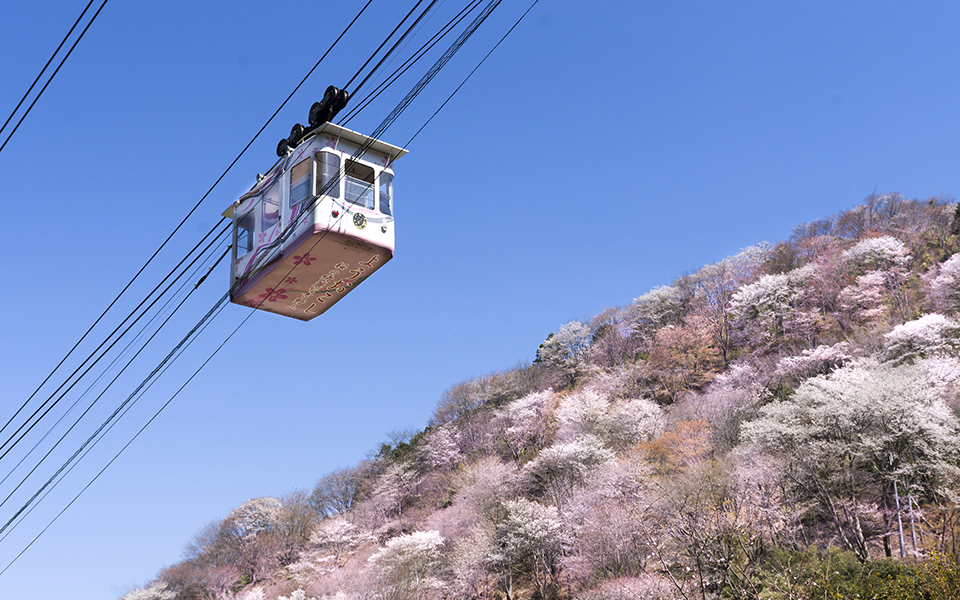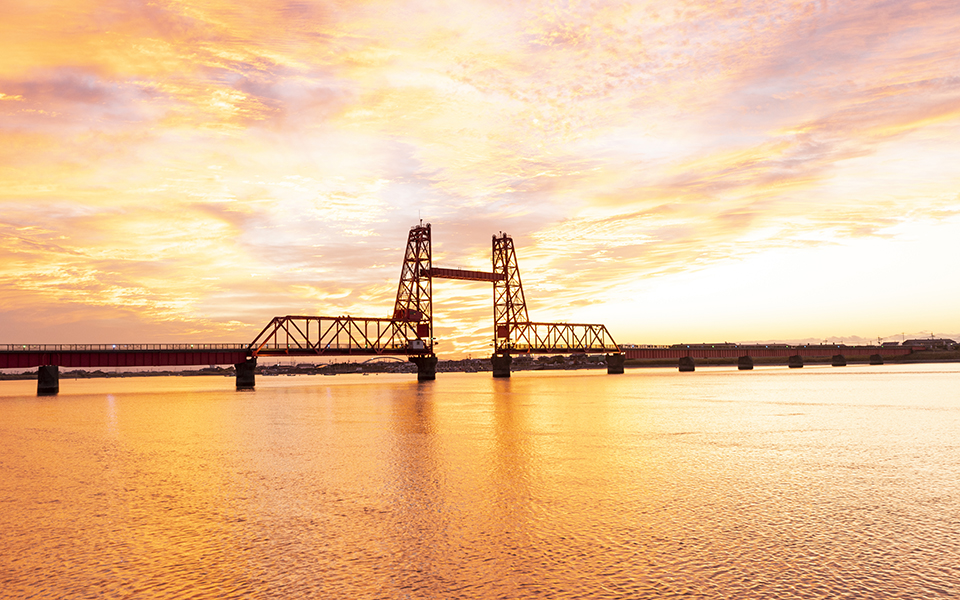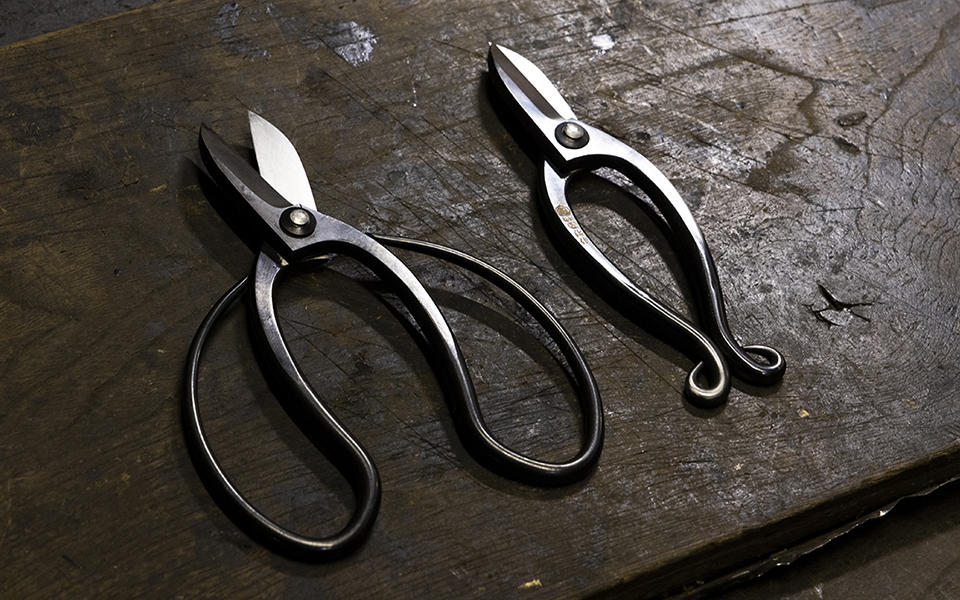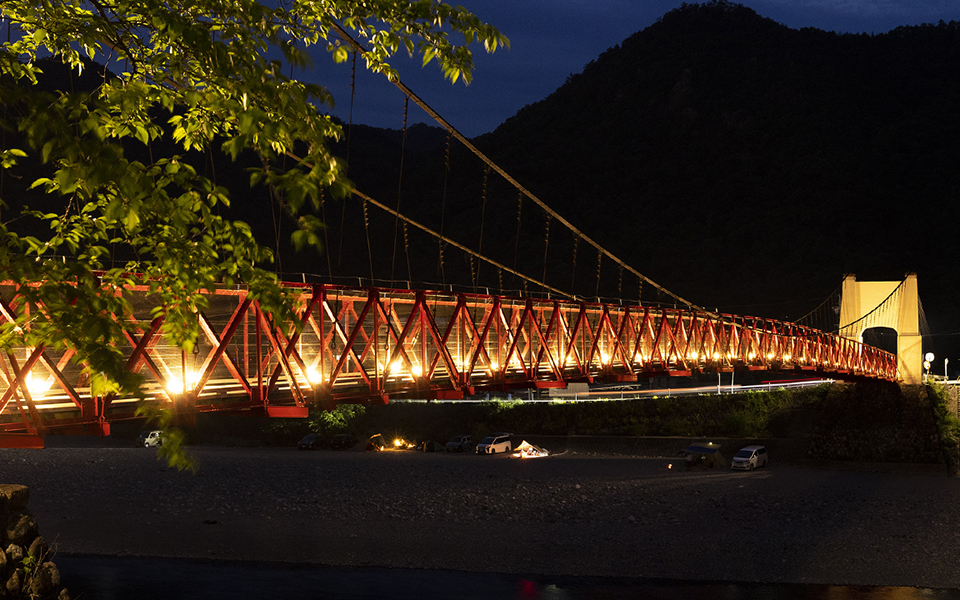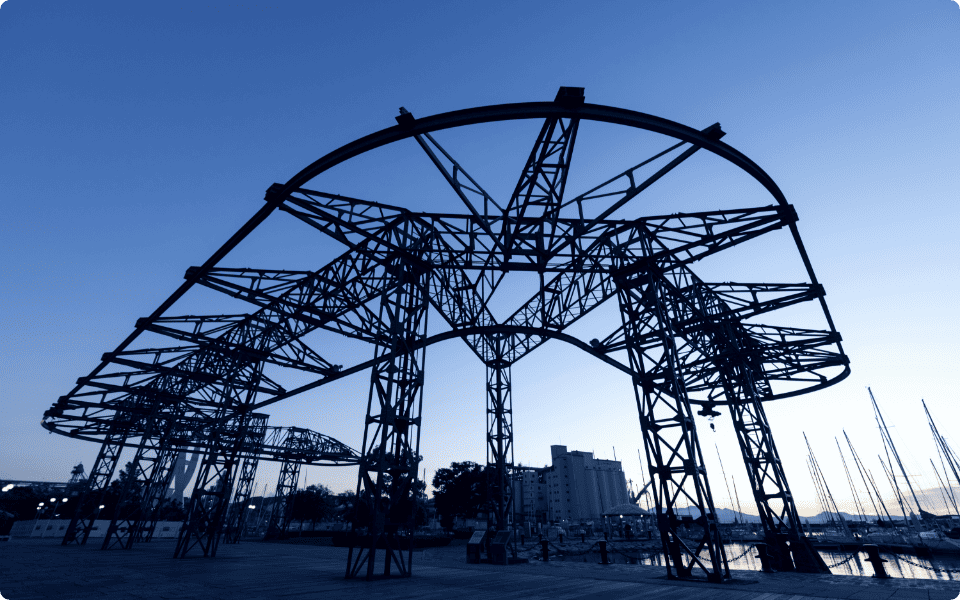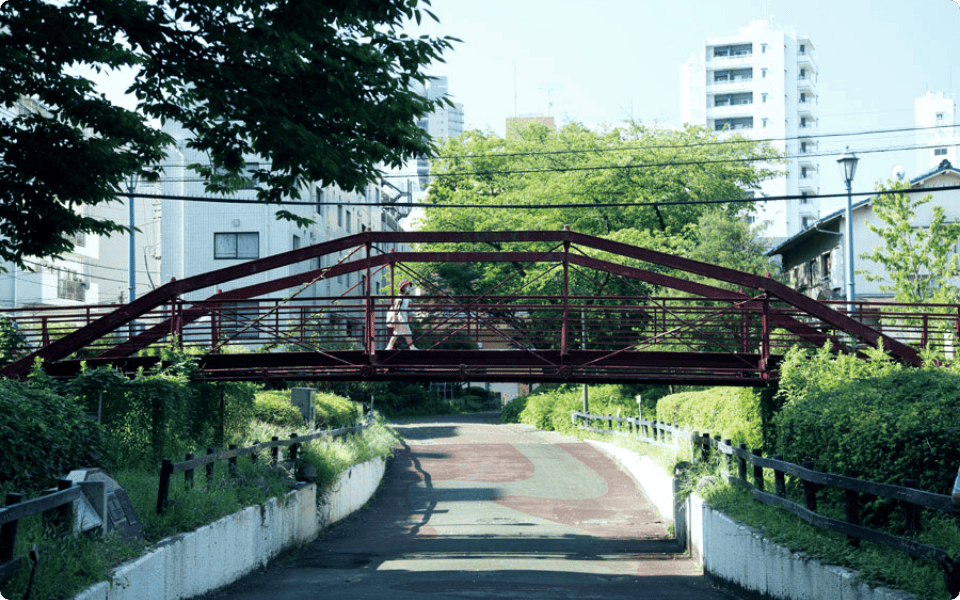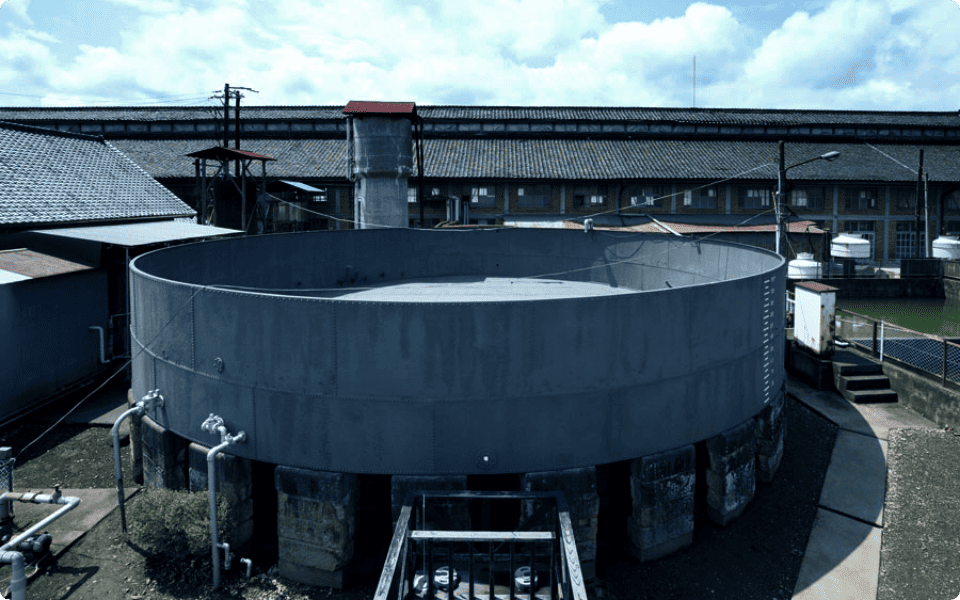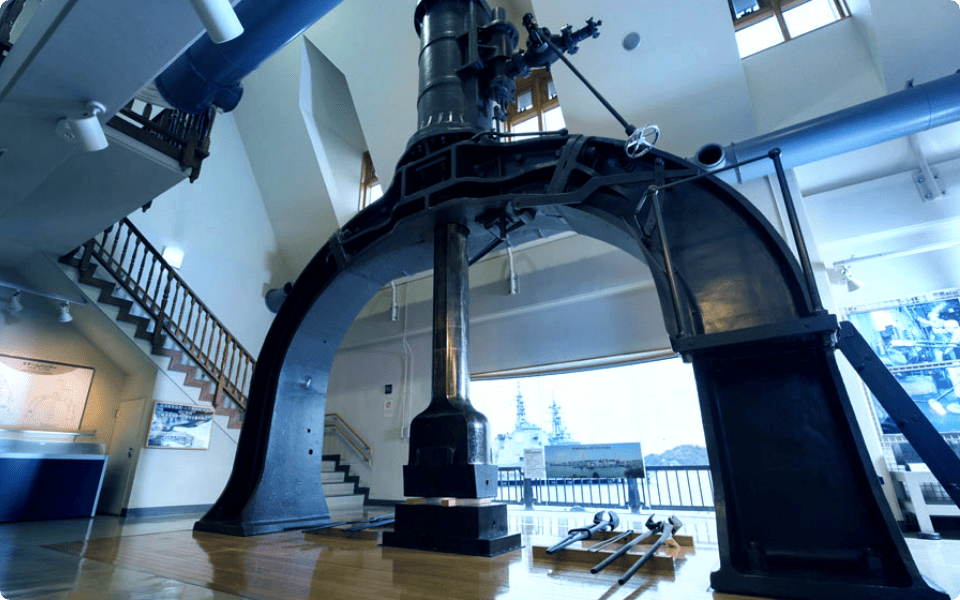-
-
Metal One’s businesses and roles
-
Plate, Construction & Tubular Products Business Division
-
Flat Products Business Division
-
Global Business Division
-
Global Marketing & Energy Project Business Division
-
Wire, Specialty & Stainless Steel Business Division
-
Digital transformation
-
Carbon neutrality
-
Business creation and innovation
-
-
Recruiting information
-
Terms of Use
Chikugo River Lift Bridge

Chikugo River Lift Bridge

Okawa City and Saga City, Fukuoka Prefecture
Japan’s Oldest Existing Movable Lift Bridge
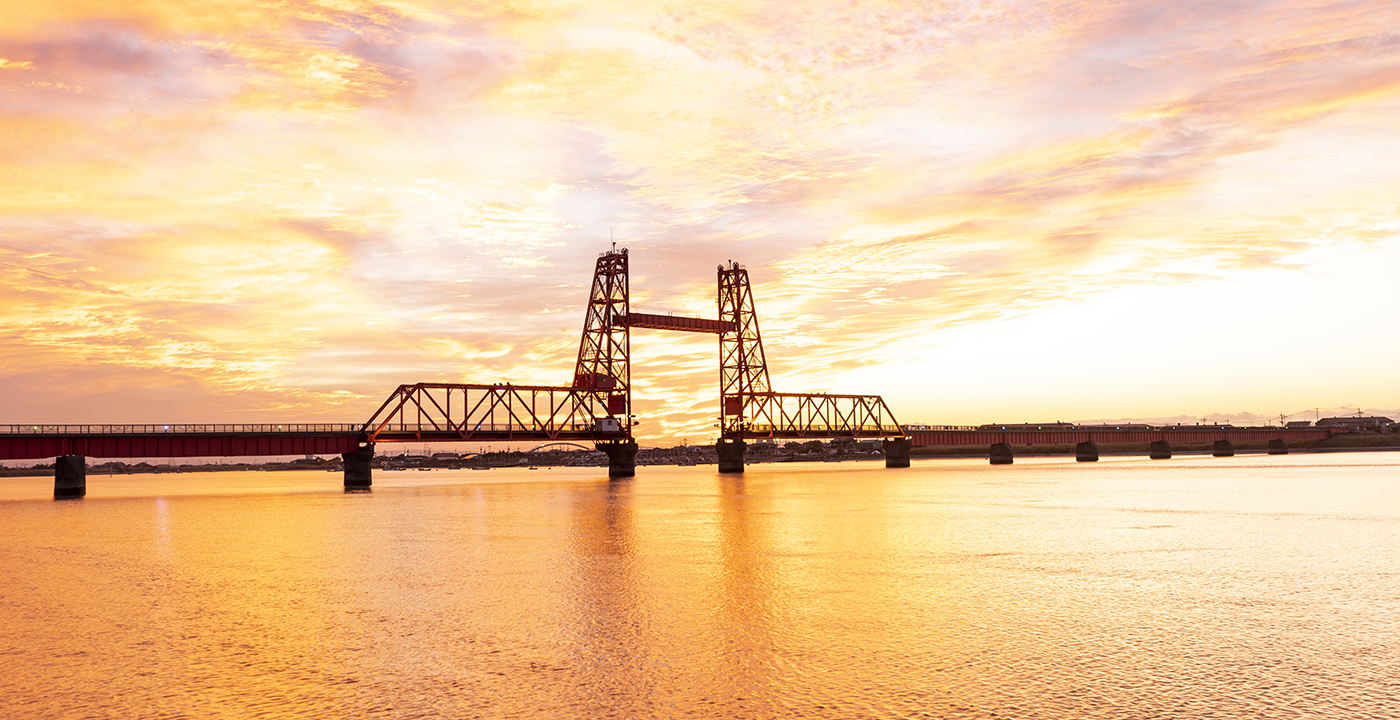
When I walked to the midpoint of this bridge, two workers happily came to meet me. “Where did you come from?” they asked. After a few moments the central bridge section, around twenty meters long, slowly rose as a siren blared.
The Chikugo River is Kyushu’s longest waterway. Several kilometers upstream from its mouth on the Ariake Sea, the river is spanned by the Chikugo River Lift Bridge, a red iron bridge with a huge, H-shaped steel tower. Japan’s oldest existing movable lift bridge, it was designated an Important Cultural Property in 2003.
Linking Okawa and Saga (once called Morodomi Town), two cities in Fukuoka Prefecture, the Chikugo River Lift Bridge was built in 1935 as part of the old Saga Railway Line. Wakatsu Port, which flourished as Kyushu’s largest rice distribution center, is nearby. Hundreds of large vessels passed through every year. The Ariake Sea reportedly has the largest tidal range in Japan, and even small boats had a hard time passing under the bridge at high tide. This is why a lift-style moveable bridge with a section that rises was built to allow vessels to pass through.
-
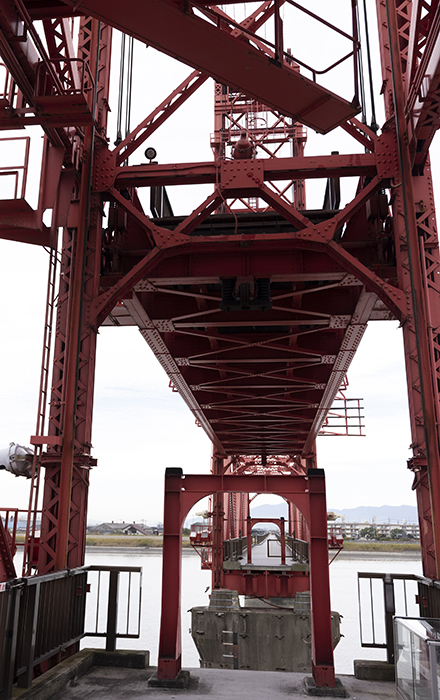
Workers stationed at the bridge raise the bridge
The Chikugo River Lift Bridge fulfilled a vital role in accommodating two kinds of transport, trains and ships. Demand for train service declined with the advent of motorization, however, and the Saga Railway Line was closed down in 1987. The announced intention to demolish the bridge came at the same time, but a swelling civic movement called for preserving the bridge as a long-beloved local symbol. In 1996, after nearly ten years of debate, it was converted into a pedestrian bridge.
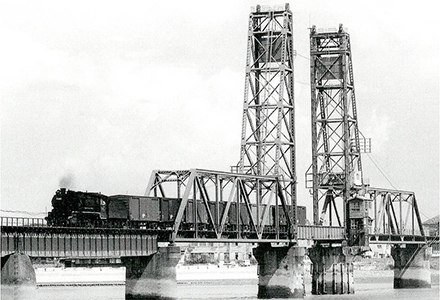
Keiko Nagamura, an assistant professor at Nihon University’s College of Industrial Technology, is an expert at putting Japan’s civil engineering heritage to work. “Many local governments have trouble preserving things that are deteriorating but have historical and technical value,” she says. “The Chikugo River Lift Bridge’s survival as a tourism resource is a fortuitous example. Using our valuable civil engineering heritage and passing it on to future generations is something that local communities should think about together with industry, government and academia.”
A tourism foundation, co-established by Okawa and Saga cities, currently operates the Chikugo River Lift Bridge. Each side of the bridge has a café and a roadside station, and many tourists visit on holidays. If you’re lucky enough to catch the bridge’s lovely silhouette in the sunset, it will take your breath away.
Value One 2023 No.79


